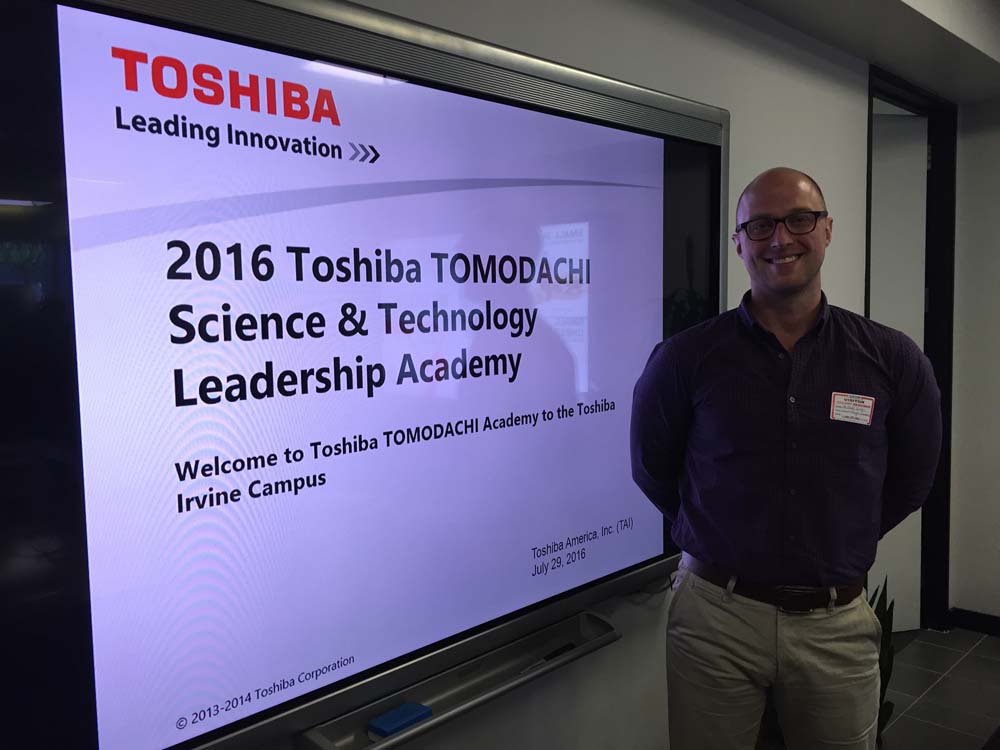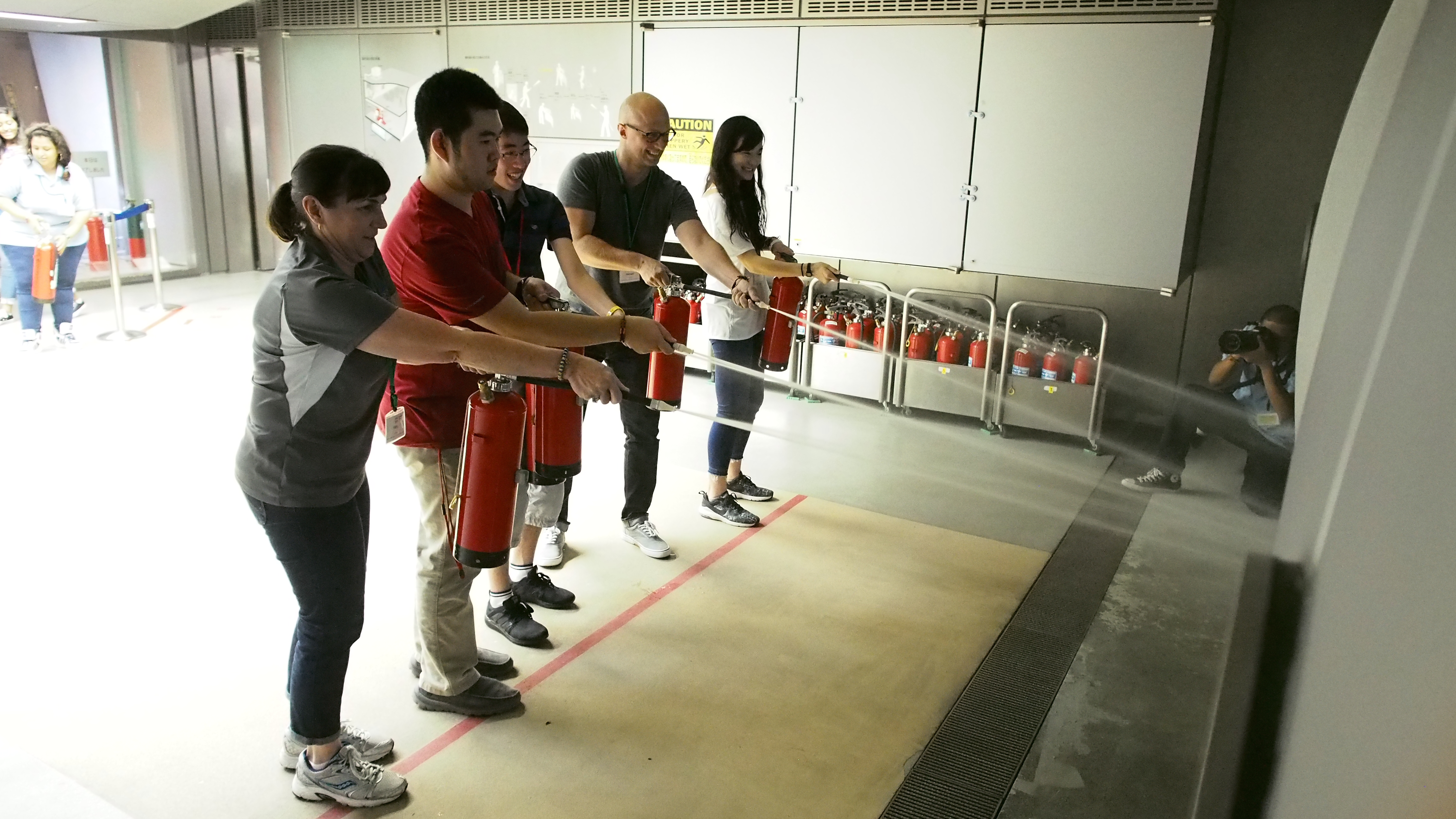Bringing Japan Into My Chicago Classroom
By Guest Blogger
Posted on 2016-10-04

On July 30th, eight high school students and four teachers from the United States traveled to Tokyo to participate in the third annual TOMODACHI Toshiba Science and Leadership Academy. The goal of our trip was to work with Japanese students and teachers on two science and engineering projects that I will also be implementing in my classroom this year. The first project was to build a marble elevator using the engineering and design process and the second project was to use science and technology ideas to improve a real-life community by making it smarter and more disaster-resilient. At the closing ceremonies each group presented their suggestions for one of the following communities: Jakarta, Beijing, Lesbos, or Kuchineorabu-jima.
To help research the community design, our group visited the Toshiba Science Museum to learn more about smart community design and the Tokyo Skytree tower where we learned about earthquake resistant architecture. Taichi Furuhashi from Crisis Mappers Japan brought his drone and spoke with our group about disaster mapping. Students also had the chance to practice 3D mapping by collecting data about the building around the center where we were staying and updating online maps. We also visited the Life Safety Learning Center, a hands-on disaster readiness and prevention facility.
The Tomodachi Initiative was born out of support for Japan’s recovery from the Great East Japan Earthquake of 2011 and walking around Tokyo made it very clear how disaster conscious the city and Japanese people are in the wake of the earthquake. On the sides of construction sites in Harajuku I saw signs in Japanese and English reading “Are you sure and safe? Don’t let earthquakes turn over, knock down, or move the furniture” and markers in subway entrances told you how many meters above sea level you are so you can find higher ground in the event of a tidal wave. Nowhere was this focus on disaster prevention more evident than in the Life Safety Learning Center.
In the center we practiced putting out a fire on a screen using water-filled extinguishers and escaped from a series smoke-filled rooms by staying low to the ground. We also experienced typhoon force winds in a simulator. Unfortunately due to a drought were were not able to don the waterproof boots and jackets and experience the “rain” along with the wind. Just before leaving we took turns experiencing what it feels like to be in a magnitude 7 earthquake on the center’s earthquake simulator, complete with falling foam furniture.
We also watched an informational cartoon about three Japanese children discussing how the next big earthquake could occur at any time. Then, the children magically travel back in time to visit three different earthquake events, one being the Great East Japan Earthquake. With each visit the children learn valuable lessons about being prepared and cooperation during a disaster. The video ends with the children back in their classrooms presenting to their classmates about the importance of being prepared when an earthquake strikes. This is foreshadowed by the students discussing in a previous scene about how the next big earthquake could occur at any time.
I was shocked by how disaster conscious the Japanese culture was. In Chicago we have our students complete a tornado drill every school year, but I could never imagine a disaster learning center in the city nor signs on buildings reminding residents to be prepared for flooding even though it is becoming more and more common in the city. In general, I think in our country we have a tendency to shelter our students and children from the existence of natural disasters rather than prepare them for their inevitable occurrence.
Over the past year our country has been ravaged by massive flooding, record-setting blizzards, and drought-fueled fires, and unfortunately events like these will become more common as the affects of climate change continue to unfold. As science educators, we are in the unique position to discuss these events with our students and challenge them to design new ways to raise awareness and protect against natural disasters.
Inspired by my trip, this year I will be challenging my senior-level environmental science students with the same community redesign challenge that the students completed as part of the Tomodachi Toshiba Science and Leadership Academy. We need to provide our students with more opportunities to solve real-life problems that affect individuals from a local to global level. Not only do these opportunities hook and engage students in the science and engineering practices, but they also open students up to future college and career pathways that they might not have been exposed to otherwise.
NSTA guest blogger Michael Kosko is the Science Chair and Career and Technical Education (CTE) Coordinator at Al Raby School for Community and Environment in Chicago, IL. Kosko teaches environmental science and a STEM design course and runs the school’s hydroponic grow lab and new makerspace. Follow him on Twitter @MrKosko.
For more photos from this year’s TOMODACHI Toshiba Science & Technology Leadership Academy please click here.
The mission of NSTA is to promote excellence and innovation in science teaching and learning for all. Learn more about the Next Generation Science Standards at theNGSS@NSTA Hub.
Future NSTA Conferences
2016 Area Conferences
Follow NSTA
Disclaimer: The views expressed in this blog post are those of the author(s) and do not necessarily reflect the official position of the National Science Teaching Association (NSTA).




